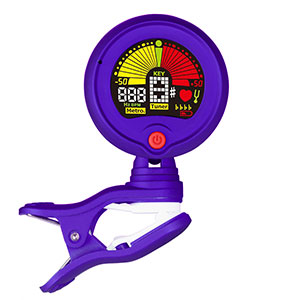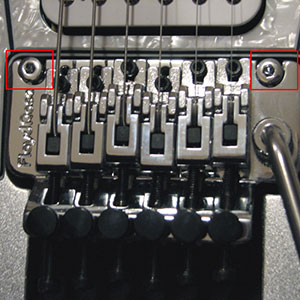- Home
- Instruments
- Gear
- Recording
- Lessons
- Reviews
- Blog

If you own a guitar of any type, you simply must have a guitar tuner. That's the way it is. Guitars are specific in a way that most of them drop out of tune over time, so having a device to correct that anomaly is essential.
Guitar tuners come in all shapes, sizes, and carry various price tags. You can read more about various types of tuners.But that doesn't really matter at the moment. The thing that does matter is that you can get a guitar tuner that will work for quite cheap if you are on a budget. Once you have a decent tuner at your side, it's time to figure out how to use it to get the best possible results.
At a glance, it might seem pretty simple. You just plug your guitar into a tuner, or bring a tuner close to the guitar depending on the type, and just tune every string so that it shows the correct pitch. However, that's how it's supposed to work. Unfortunately, that is not always the case. Today we are going to discuss proper guitar tuning techniques that will guarantee a true tuning every time.
 Most guitar tuners utilize some sort of visual interface that tells you how close to the true pitch you are at any given moment. These can come in form of LCD displays or a simple set of LED lights that form a scale of some sort. When you plug in a completely out of tune guitar, you will find that your strings are probably in some odd pitch.
Most guitar tuners utilize some sort of visual interface that tells you how close to the true pitch you are at any given moment. These can come in form of LCD displays or a simple set of LED lights that form a scale of some sort. When you plug in a completely out of tune guitar, you will find that your strings are probably in some odd pitch.
Once you figure out where you're at on the chromatic scale, you use the tuning pegs to adjust the pitch until you reach the one you need. Repeat this process for each string until you achieve the standard tuning, or whichever one you want. In the minds of most people, this is where the use of guitar tuner ends. However, quickly tuning the guitar and thinking it's set may set you back.
It's not uncommon for guitar players who do this to notices their guitars are out of tune just a bit, even though the tuner showed perfect pitch. There is a good explanation for this. When you tune a guitar into a specific tuning for the first time, the strings will hold that tuning perfectly until you start playing them.
Depending on the state of your strings, the subsequent drop out of tune will vary in severity. The cause of this is the fact that you are changing the tension the strings are putting on the neck of the guitar.
If you go from low E string and start tuning your guitar until you reach high E, chances are that your low E will be slightly out of tune. In essence, once you do your first tuning with a guitar tuner, go back and check every string once more.
If they are sticking to the pitch you tuned in, start playing and bending the strings. Play several blues licks or something along those lines, and include some strumming. Once you're done, go back and check the tuning one more time. You will probably see a slight change in pitch. This is normal and is remedied by rechecking the tuning several times.
 If your guitar has a Floyd Rose type bridge, checking the tuning several times is essential. If you just tune your guitar without rechecking anything and then lock down the Floyd Rose, you will have a lot of work to do just to correct a mistake that was easily avoidable. Sometimes you won't have a tuner available at all times. In those cases, you will need to know other ways to check if the guitar is still in tune. One common technique is to use natural harmonics to check the tuning. To do this you will place your finger on the 5th or 7th frets and slightly touch the string. When you pick that string, you will hear natural harmonics. Harmonics you get on the 5th fret of a lower string need to correspond to harmonics on the 7th fret of the next string.
If your guitar has a Floyd Rose type bridge, checking the tuning several times is essential. If you just tune your guitar without rechecking anything and then lock down the Floyd Rose, you will have a lot of work to do just to correct a mistake that was easily avoidable. Sometimes you won't have a tuner available at all times. In those cases, you will need to know other ways to check if the guitar is still in tune. One common technique is to use natural harmonics to check the tuning. To do this you will place your finger on the 5th or 7th frets and slightly touch the string. When you pick that string, you will hear natural harmonics. Harmonics you get on the 5th fret of a lower string need to correspond to harmonics on the 7th fret of the next string.
Having a guitar tuner already sets you up for success, however knowing how to use that tool is what can make all the difference. The techniques we talked about in this article will allow you to have a pitch perfect tuning every time you need to tune your guitar. This applies to electric guitars, acoustic guitars, and bass guitars.
With all that stuff out of the way, feel free to check out our list with recommended guitar tuners. We hope you enjoyed this guide, make sure to hit that Like button if you did!

Reader Interactions